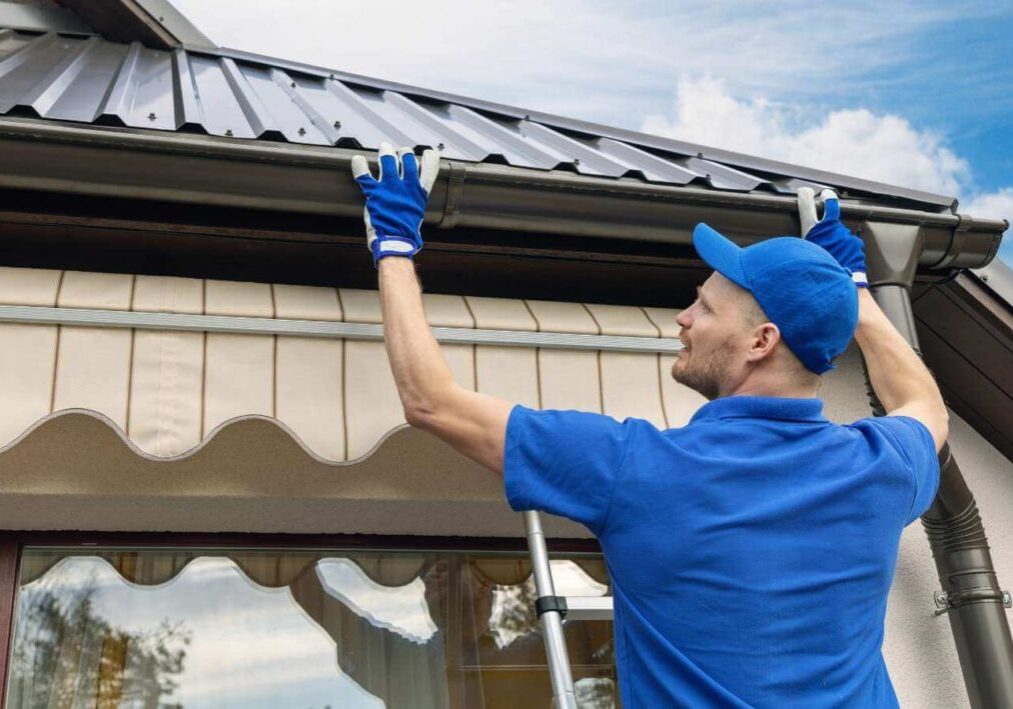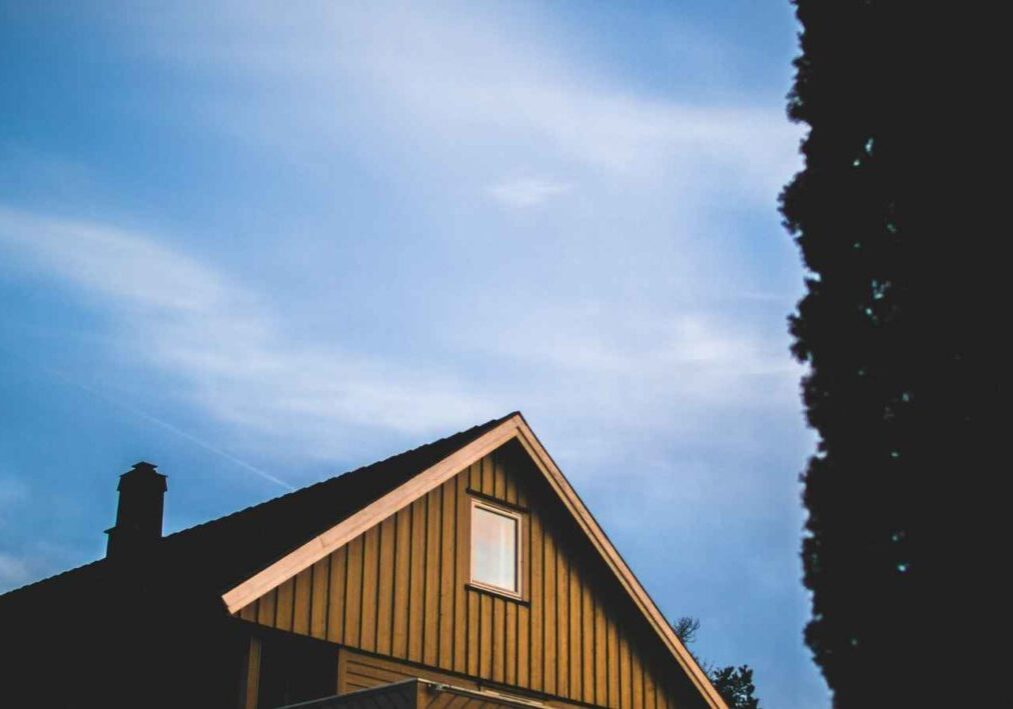Introduction
When it comes to designing a home, every architectural detail plays a crucial role in shaping its overall aesthetic appeal and functionality. Among these elements, the design of the roof stands out as a significant contributor to the overall character and style of a building. In this comprehensive guide, we’ll explore the influence of architectural style on roof design, uncovering how different architectural styles have shaped the evolution of residential roofing. From classic gable roofs to modern flat roofs, understanding the relationship between architectural style and roof design can help homeowners make informed decisions when it comes to their roofing needs.
Understanding Architectural Style and Roof Design
Architectural style refers to the overall look and feel of a building, including its materials, shapes, and decorative elements. Roof design plays a crucial role in defining the architectural style of a building, as different roof types can greatly impact the overall aesthetic and functionality of a structure.
1. Traditional Architectural Styles
- Gable Roof: A classic choice for traditional homes, the gable roof features two sloping sides that meet at a central ridge. Its triangular shape and steep pitch provide excellent water drainage and ample attic space. Gable roofs are versatile and can be adapted to different architectural styles, making them a popular option for both residential and commercial buildings. The simplicity of their design also allows for easy maintenance and cost-effective construction. Additionally, gable roofs are known for their ability to withstand strong winds and heavy snow loads, making them a practical choice for areas with extreme weather conditions. The aesthetic appeal of gable roofs adds charm and character to any structure, enhancing its overall curb appeal.
- Hip Roof:Commonly found in Craftsman and Victorian-style homes, the hip roof slopes on all four sides, creating a more compact and stable structure. Its versatility makes it suitable for various architectural styles. The hip roof is also known for its ability to provide excellent protection against high winds and heavy snow loads. Additionally, the overhanging eaves of a hip roof can help to shade windows and walls, reducing energy costs. Overall, the hip roof is a popular choice for homeowners looking for both aesthetic appeal and practicality in their roof design. Its classic look and functional benefits make it a timeless option for any architectural style.
2. Contemporary Architectural Styles
- Flat Roof: Popular in modern and minimalist architecture, flat roofs offer a sleek and streamlined appearance. While they may not provide as much insulation as pitched roofs, flat roofs allow for rooftop gardens, solar panels, and outdoor living spaces. The simplicity of flat roofs also makes them easier and more cost-effective to maintain compared to pitched roofs. Additionally, flat roofs are ideal for urban areas where space is limited and a contemporary aesthetic is desired. Flat roofs are also more versatile in terms of design, allowing for creative and unique architectural expressions. They can be easily adapted to accommodate different building functions and styles, making them a popular choice for many architects and homeowners alike.
- Butterfly Roof:Characterized by its inverted V shape, the butterfly roof is a striking architectural feature that allows for ample natural light and ventilation. It’s often used in contemporary and eco-friendly home designs. The unique shape of the butterfly roof also allows for rainwater collection, making it a sustainable choice for environmentally-conscious homeowners. Additionally, the sharp angles of the roof create a modern and sleek aesthetic that can enhance the overall design of a building. Overall, the butterfly roof is a versatile and visually appealing option for those looking to incorporate modern and sustainable elements into their home design. Its distinctive silhouette can make a bold statement while also serving practical purposes such as water conservation and energy efficiency.
The Evolution of Roofing Materials
Roofing materials have come a long way from traditional thatch and mud to modern options like asphalt shingles, metal, and solar panels. Advancements in technology and sustainability have also influenced the evolution of roofing materials, leading to more durable and eco-friendly options for homeowners.
1. Traditional Roofing Materials
- Asphalt Shingles: Widely used in traditional home designs, asphalt shingles offer affordability, durability, and ease of installation. They come in a variety of colors and styles to complement different architectural aesthetics. Asphalt shingles have evolved over the years to include advanced technology that enhances their resistance to weather elements and prolongs their lifespan. With proper maintenance, asphalt shingles can provide a reliable roofing solution for many years to come. As one of the most popular roofing materials in North America, asphalt shingles continue to be a top choice for homeowners looking for a cost-effective and reliable option. Additionally, advancements in manufacturing processes have made asphalt shingles more environmentally friendly, making them a sustainable choice for eco-conscious consumers.
- Wood Shakes: Commonly found in Craftsman and Tudor-style homes, wood shakes add warmth and character to a roof. While they require more maintenance than other materials, wood shakes offer natural beauty and insulation properties. Over time, wood shakes can weather and change color, adding to the rustic charm of a home. With proper care and maintenance, wood shakes can last for decades, making them a popular choice for homeowners seeking a traditional look. However, wood shakes are susceptible to rot, mold, and insect damage if not properly maintained. It is important to regularly inspect and treat wood shakes to ensure their longevity and durability.
2. Modern Roofing Materials
- Metal Roofing: Increasingly popular in contemporary architecture, metal roofs offer durability, energy efficiency, and a sleek appearance. Available in various finishes, including aluminum, steel, and copper, metal roofs complement modern architectural styles. Metal roofing is also known for its longevity, with some types lasting up to 50 years or more. Additionally, metal roofs are lightweight and can be installed over existing roofs, reducing waste and costs associated with removal. Overall, metal roofing is a sustainable option that provides both aesthetic appeal and practical benefits for homeowners. With its ability to withstand harsh weather conditions and require minimal maintenance, metal roofing is a smart investment for those looking for a long-lasting and eco-friendly roofing solution.
- Sustainable Roofing Materials: With a growing emphasis on environmental sustainability, homeowners are exploring eco-friendly roofing options such as recycled materials, green roofs, and solar shingles. These materials not only reduce environmental impact but also contribute to energy savings and long-term cost-effectiveness. In addition to being environmentally friendly, sustainable roofing materials can also improve indoor air quality and provide better insulation for homes, leading to increased comfort and reduced energy bills. As technology continues to advance, more innovative and sustainable roofing options are expected to become available in the market. These advancements may include materials that are even more durable, efficient, and aesthetically pleasing. Homeowners looking to invest in sustainable roofing should stay informed about the latest developments in the industry to make the best choice for their homes.
Choosing the Right Roof Design for Your Home
1. Consider Architectural Compatibility
- Harmonize with the Style: Select a roof design that complements the architectural style of your home. For example, a Mediterranean-style home may feature a red clay tile roof, while a contemporary home may opt for a flat or butterfly roof design.
- Consider the Slope of your Roof: Additionally, consider the slope of your roof to ensure proper drainage and prevent water damage. It is also important to take into account the climate of your region when selecting a roof design to ensure durability and longevity.
- Consult with a Professional: Lastly, consult with a professional roofing contractor to determine the best roof design for your specific needs and budget. They can provide valuable insight and recommendations based on their expertise and experience in the industry.
2. Assess Practical Considerations
- Climate and Weather Conditions: Choose roofing materials and designs that are suitable for your local climate and weather patterns. For instance, homes in regions prone to heavy rainfall may benefit from pitched roofs with adequate drainage systems. On the other hand, homes in areas with extreme heat may require roofs that are energy-efficient and can withstand high temperatures.
- Maintenance Requirements: Additionally, consider the maintenance requirements of different roof designs to ensure longevity and cost-effectiveness. For example, flat roofs may require more frequent maintenance to prevent water pooling and leaks, while metal roofs are known for their durability and low maintenance needs. By taking these practical considerations into account, you can choose a roof design that not only complements your home aesthetically but also functions effectively in your specific climate and weather conditions.
Conclusion: Harmonizing Architecture and Roof Design
In conclusion, the relationship between architectural style and roof design is a vital consideration for homeowners seeking to enhance the visual appeal and functionality of their homes. By understanding the characteristics of different architectural styles and the available roofing materials, homeowners can make informed decisions that harmonize with the overall design aesthetic while meeting practical needs. Whether traditional or contemporary, the right roof design adds value, beauty, and durability to any home, ensuring years of comfort and enjoyment for homeowners and their families.
Share this post:



